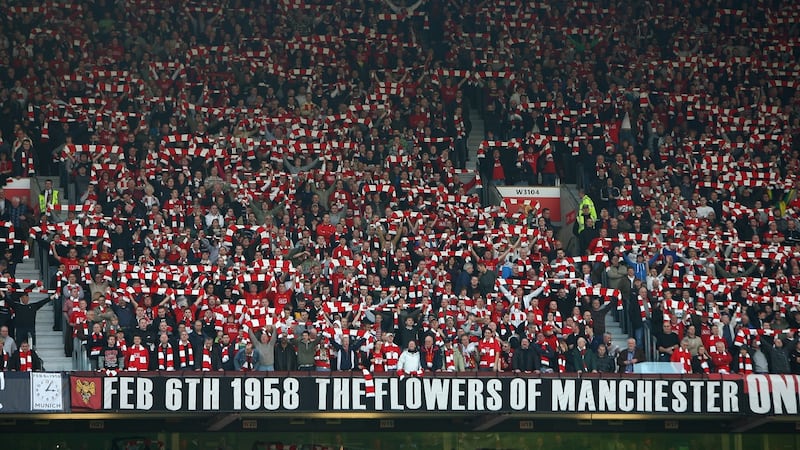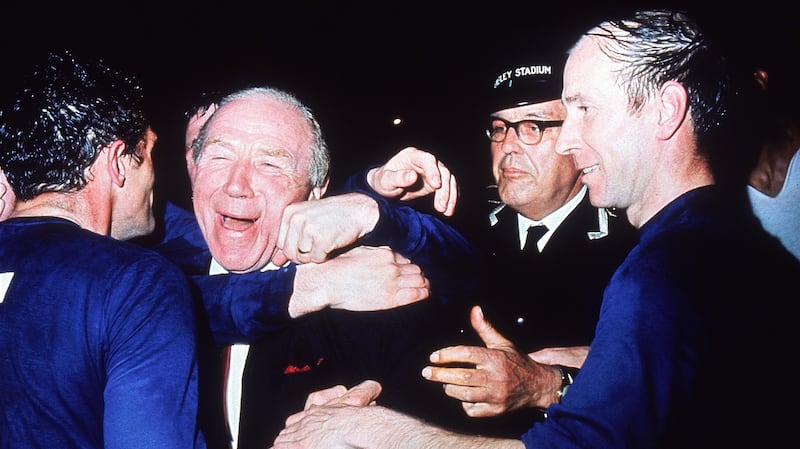In the first week of February 1958 a syndicated bulletin from Yugoslavia hit newspaper offices across England. It began: “A crowd of autograph hunters stormed the customs hall at Belgrade airport yesterday.”
The reason for the commotion was that Manchester United had just landed. They were 53 minutes late, the report said, delayed by fog. The audience was undeterred: "The players were engulfed."
There were four short paragraphs but they conveyed one of the key factors of the Busby Babes: excitement.
The Manchester United side nurtured and moulded by Matt Busby and Jimmy Murphy stirred people. In this case that arousal caused an audience 1,500 miles from Old Trafford to rush the customs officers of a strict regime. Some of them were probably fans of United's next opponents, Red Star Belgrade.
48 hours later, with United 3-0 ahead after 31 minutes of the second leg of the European Cup quarter-final, the foreign fascination with the Busby Babes looked justified. United were 5-1 up on aggregate.
They conceded three themselves early in the second half, but by the final whistle Busby’s boy-men were in a semi-final against AC Milan.
After the game United's players went to Belgrade's Metropol hotel with Red Star's team. Dragoslav Sekularac - in Bobby Charlton's world XI in 1960 - told Jonathan Wilson in The Anatomy of Manchester United this was not usual practice. The United players' personalities, Sekularac said, changed things.
“Their friendship, their kindness, how they received us in the first leg in Manchester and how they behaved here, and how we greeted each other, even today I take my hat off to them.”
These glimpses of the Busby Babes through Yugoslav eyes reveal an aura that was there and then. It is not nostalgia. Busby’s revolutionary, humane management in Manchester not only created a talent factory in the dirty, old industrial town, it brought colour. His Manchester United team affected neutrals, it had a winning smile.
Grow your own
The members were young. It was a conscious decision: grow your own. United did and won the first five FA Youth Cups from 1953 to ‘57. Hence ‘Babes’.
Then some of the offspring of that system won the League title in 1955-56 and did so by 11 points - a record for the 22-team top flight formed in 1919. The Babes won the League again in 1956-57 and reached the FA Cup final - they were one game away from becoming the first club in the 20th century to do the Double.
Captain, Roger Byrne, began the '55-56 season aged 26. Tommy Taylor was 23, Mark Jones 22, Geoff Bent 22, Liam Whelan 20, David Pegg 19, Eddie Coleman 18 and Duncan Edwards 18. They were the future. All eight died at Munich.
Jimmy Greaves described Duncan Edwards for a modern audience: "Combine the ability of Eric Cantona and the strength and application of Roy Keane with the distribution of Glenn Hoddle and the temperament of Paul Scholes and you are somewhere near."

Vibrant, youthful, Edwards’ United offered a vivid contrast with what had gone before. As Eamon Dunphy, a future United apprentice, wrote in his life of Busby A Strange Kind of Glory: “The new mood was different . . Busby’s club had a bit of a swagger, more than a hint of disdain, was more powerful than gracious, possessed the arrogance of the new generation, convinced that it had found a better way - of playing left-back, of living, of expressing itself.”
It was Busby’s imagination and often forlorn experiences as a player which produced his desire to overturn orthodoxies - subtly, without the establishment comprehending.
FA bureaucrats stood in his way when he entered United for the European Cup. They had prevented Chelsea entering the season before, dismissed it as “a gimmick”. Busby got his way.
It was he who understood the full ramifications of Hungary’s landmark victories over England in 1953 and 1954 - 3-6 & 7-1 - then England’s loss to Uruguay in the last eight of the 1954 World Cup.
Busby wrote to Stanley Matthews after the tournament praising Hungary and Uruguay - “they had strength, speed and brilliance.” He noted “they wear featherweight boots” and “thin short-sleeved shirts and skimpy shorts.” Unless English clubs mixed in Europe, he feared being “left behind.”
Soon United would be adorned in new kit. Dunphy recalled being at Dalymount Park in September 1957 when United began their European Cup campaign against Shamrock Rovers: “No baggy shorts . . they wore v-necked red shirts without the old collars of Matthews and Finney.”
United won 6-0. A clean shock of the new.
Crowds responded. In August 1955, for the first home game of the season there were 24,000 at Old Trafford; the following season the average home gate was 49,000. In the last domestic match the Babes played, at Highbury five days before Munich, there were 64,000 present to see United win 5-4.
And then Munich, 23 dead. Such loss, such shock, such a deep reaction.
Busby’s United had come to represent something - something different, something fresh, something to rush to see - even at an airport. Now it was gone.
The crash was front-page news across Europe, it was on television in New York, the BBC interrupted ‘Children’s Hour’ to relay the latest.
Manchester’s Kennedy moment
People remembered where they were when they heard, just as they did with JFK. The scale of mourning saw 60,000 at the next match at Old Trafford. John Giles was there as young United player that night and has said it was “the most emotionally charged in the history of Manchester United, perhaps in the entire history of the game.”
Harry Gregg, playing with an undiagnosed fractured skull, just a fortnight after the disaster said: "They tell me you could almost reach out and touch the goodwill."
That feeling stayed. It stayed because Busby returned from hospital in Germany and rebuilt.
“I knew it was going to take us the best part of five years to re-create the old pattern if ever we could,” he said. “One thing I was determined to do was to keep the name of Manchester United on people’s lips. We had always to look as if we were doing something. Having been the greatest, we would not settle for anything less.”

It stayed because of affection. It stayed because the Babes were in the hearts and songs of supporters, many now from beyond Manchester.
It has stayed 60 years, so that there will be commemorations in Manchester, Munich and Belgrade on Tuesday.
This was not inevitable - it also stayed because, among other things, Charlton survived, Denis Law was bought and George Best was discovered. The reality on the pitch is crucial.
Ten years later Busby saw his new team win the European Cup which his earlier team had died for. It was a tragedy and resurrection beyond imagination. There were tears in 1958, there were tears in 1968.
It sustained Manchester United, brought a breadth and depth of feeling even when they fell into the Second Division just six years later. It took another two decades before Alex Ferguson re-created some of the magnetism.
How good were the Busby Babes?
This is Bobby Charlton in 1960: "From top to bottom the present United side is a good and happy one. It may never be as good as Roger Byrne's team, but then, what team ever could be?"













